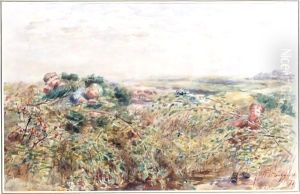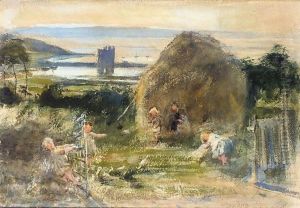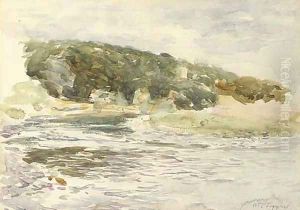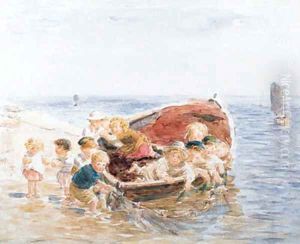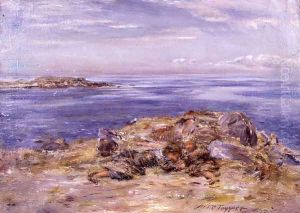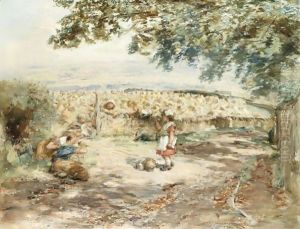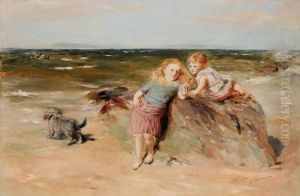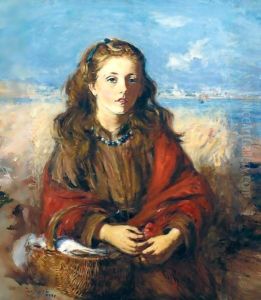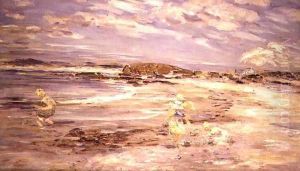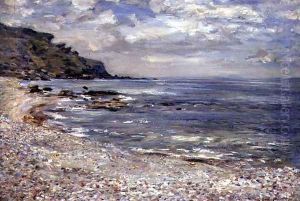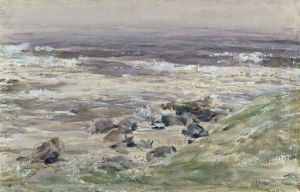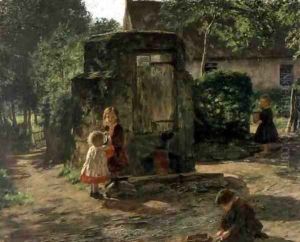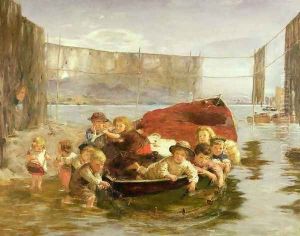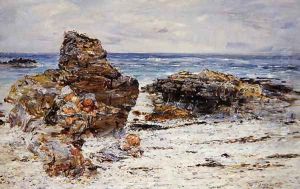William McTaggart Paintings
William McTaggart was a distinguished Scottish landscape and marine painter, often regarded as one of the most prominent Scottish artists of the 19th century. He was born on October 25, 1835, in Aros, Kintyre, in the west of Scotland. McTaggart's early life was marked by an intimate relationship with the Scottish countryside, which greatly influenced his work throughout his career.
Initially apprenticed to a draper, McTaggart's passion for art led him to the Trustees' Academy in Edinburgh, where he studied art under the guidance of Robert Scott Lauder. He was a diligent student and quickly developed a reputation for his skillful handling of color and his ability to capture the essence of the Scottish landscape.
McTaggart's works are characterized by their loose brushwork and impressionistic style, which was quite innovative for his time. He was particularly adept at depicting the changing moods of the sea and the beauty of the Scottish rural life. His paintings often featured children and the elderly, rooted in natural settings that conveyed a sense of movement and the passage of time.
Throughout his career, McTaggart remained deeply connected to his Scottish heritage, drawing inspiration from the lore and traditions of his homeland. He became a prominent figure in the Scottish art scene and was elected as a full member of the Royal Scottish Academy in 1870. Despite his success, he always remained humble and dedicated to his craft.
McTaggart's later works became even more free in execution, and his mastery of color and light is evident in paintings such as 'The Storm' and 'Spring'. These works anticipate the techniques of Impressionism and are considered ahead of their time.
William McTaggart died on April 2, 1910, in Broomieknowe, Midlothian, leaving behind a legacy of work that continues to inspire and resonate with lovers of Scottish art. His paintings are held in numerous public collections, including the National Galleries of Scotland, and his contribution to Scottish art is celebrated to this day.



